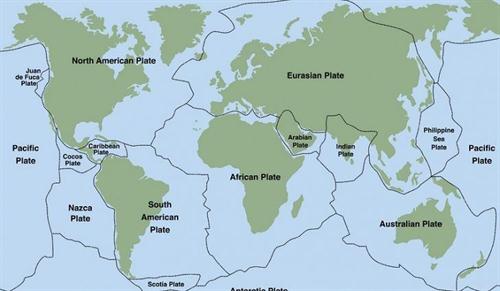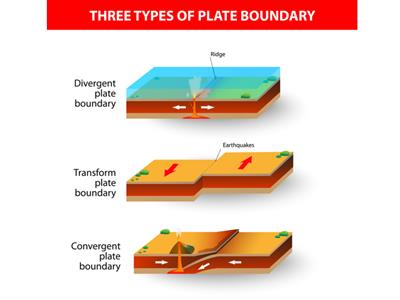
PUMPA - SMART LEARNING
எங்கள் ஆசிரியர்களுடன் 1-ஆன்-1 ஆலோசனை நேரத்தைப் பெறுங்கள். டாப்பர் ஆவதற்கு நாங்கள் பயிற்சி அளிப்போம்
Book Free DemoForces that act from the interior of the Earth towards the Earth surface are called ,Internal processes or Endogenetic processes. Earth’s interior process produces the flow of heat and material towards the surface to form a crust, i.e. to build the landscape and creating topographic relief. Internal radioactivity is the principal source of power for this process.
Force acting on the surface of the Earth due to natural agents like running water, glacier, wind, waves etc., are called External or Exogenetic processes. These external processes tear the landscape down into relatively low elevated plains and shape the landform created by the Endogenetic process.
The Earth crust has a mosaic of plates floating over the asthenosphere called Tectonic plates.

Depending on the size of the plate, these plates are divided into major and minor plates. The total number of plates is yet to be discovered, but the recognized numbers are Seven major plates, Seven intermediate-sized plates, and Six smaller plates.
Over the mantle, i.e. in the asthenosphere, these plates float independently, resulting in collision or divergence of plates. Collisions of these plates give rise to mountain ranges and other irregular surface features, both on land and the ocean floor. This phenomenon is called ‘plate tectonics’.
Movements at the boundary between two plates can explain the nature of landforms found in these areas.
Movements at the boundary between two plates can explain the nature of landforms found in these areas.
Divergent Boundary
Plates that are moving apart are called divergent plate boundaries (constructive plate margins). Here, a new crust is formed.
Example:
Mid Atlantic Ridge and Pacific Ring of Fire
Convergent Boundary
When two plates move towards one another at a convergent plate boundary (destructive plate margins), it forms a major physical feature. If one of the plates slides beneath the other, a subduction zone is formed. Powerful earthquakes are common along these boundaries.
Example:
Fold Mountain-Himalayas. The world's deepest Mariana Trench, in the South Pacific Ocean, is formed as the mighty Pacific plate subducts beneath the smaller, less-dense Philippine plate.

Conservative/Transform Boundary
Here the plates laterally slide along plate boundaries, i.e. the plates slide horizontally past each other. In contrast to convergent and divergent boundaries, the crust is cracked and broken at transform margins but, it is not created or destroyed.
Example:
San Andres Fault